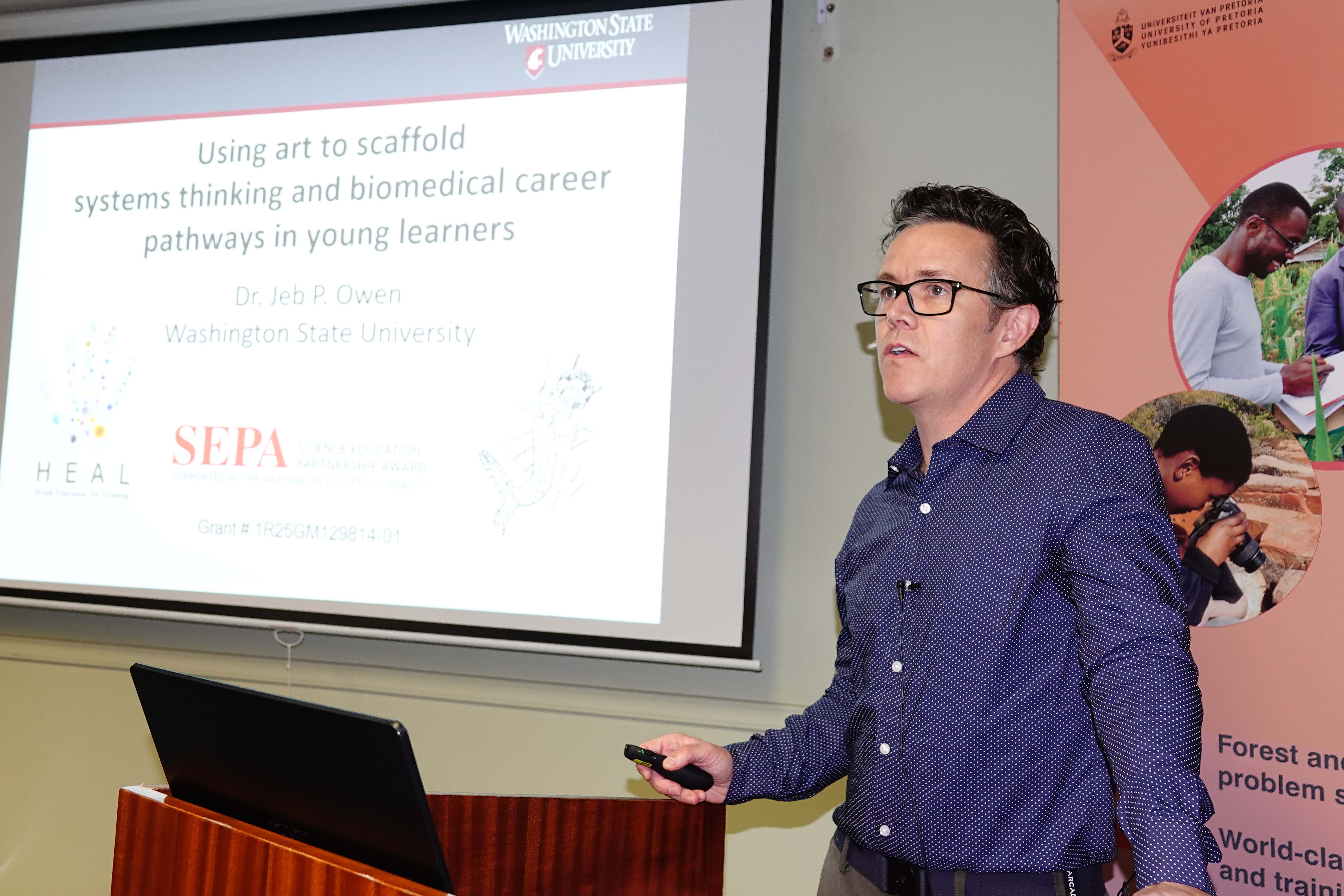Using art as a gateway to systems thinking, biomedical careers and health equity 2024-04-19
Dr Jeb Owen of Washington State University presented an interesting and thought-provoking seminar “Using art to scaffold systems thinking and biomedical career pathways in young learners” at FABI’s Monday Morning Meeting on 15 April. The presentation drew audience members from the University of Pretoria's Faculty of Natural and Agricultural Sciences, Faculty of Health Sciences, the Institute for Sustainable Malaria Control, including the Director and Dean, Prof. Tiaan de Jager, as well as the Javett Art Centre.
Dr Owen is a Medical Entomologist and works on a variety of avian and mammalian disease systems. He is also a keen artist using photography, watercolours and charcoal media to depict anatomy. He was visiting the University of Pretoria to share his experiences of using art to teach systems thinking and cultivate interest in biomedical career pathways among young people. In addition to the MMM talk, he presented his research on ticks in the Department of Zoology and Entomology on Tuesday. During the week, Dr Owen met with various researchers across three faculties to discuss potential collaborative opportunities in research, science education, and health communication.
He is a co-investigator on the project “HEAL: Health Education through Arts-based Learning”, which is funded by a National Institutes of Health – Science Education Partnership Award. The HEAL project was designed to integrate art and science in educational programming on topics of infectious disease systems (West Nile virus, COVID-19, enteric bacteria, and Toxoplasmosis). The project team is trans-disciplinary and includes experts in education, disease ecology, human medicine, human development, psychology, and community outreach. The program interfaces with practicing teachers, professional artists, and community leaders to build and implement curricula. Multiple artistic approaches are used with youth, including photography, drawing, painting, sculpture, mixed media and cartography.
The HEAL program focuses on children in the 3rd-5th grades from rural, agricultural communities of Washington State. These primarily Latino communities are disproportionately at risk for infectious diseases and the Latino community is underrepresented in the biomedical career sector. Many participants are the children of Latino migrant labourers that work on the rural farms.
Dr Owen showed the impact of one of their projects that focused on West Nile virus, which is a mosquito-borne pathogen prevalent in Washington State’s rural agricultural areas. West Nile virus is the leading cause of mosquito-borne disease in the continental United States, and it is an example of a complex disease system. The virus is naturally maintained among wild bird species by mosquitoes that can spread the virus to people and other animals. The risk of virus infection depends on many variables that include rainfall, water management, abundance and diversity of birds, availability of flowers, human behaviour, and agriculture.
Migrant workers, especially from the Latino community that work in orchards and vineyards, are most at risk due to their exposure to infected mosquitos. Dr Owen showed how art could be used to support inquiry-based learning about the West Nile virus disease system. Among the students, the arts-based activities improved understanding of factors that affect mosquito abundance and the risk of infection with West Nile virus. In addition, the curricula generated interest diverse career pathways relevant to disease research and biomedicine. There is also anecdotal evidence of these children passing on this knowledge to their parents through explanations of their art during art shows presented at the culmination of HEAL programs.




